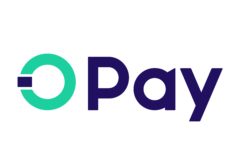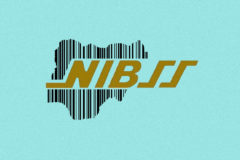Digital payments in Nigeria have had an extraordinary decade. It’s been 14 years since the Nigerian Inter-Bank Settlement Scheme (NIBSS) first introduced a real-time electronic payment system — the NIBSS Instant Payment (NIP).
NIP supports fast transactions across different channels, this includes mobile apps, web/internet banking, USSD, ATM transfers, point-of-sale (POS), or in-person banking. Although NIBSS is not the only company providing instant payments across these channels, it is the largest, thanks to the scale of its real-time infrastructure which ranks among the most sophisticated in the world.
NIP has supercharged how banking works, and for the first seven years, banks led the innovation and adoption of payment platforms for different use cases. But in the later years, younger companies, startups emerged. This nimble bunch is quickly becoming strategic players in the market as their urge to grow deepens consumer payments adoption beyond the realm banks understood or were interested in.
And the dividends are paying off. NIBSS data from January to May shows 2023 is going to be the best year for digital payments.
818.4 million: the average number of times Nigerians did a digital transfer each month so far in 2023
More people are using real-time payments than ever before. Payments volume — the number of times people made a digital transaction — has ballooned over the last few years.
In 2016, Nigerians completed 154.5 million digital payments, representing an annual average of 12.9 million transactions per month. By the end of 2022, average monthly transfers stacked up to 427.8 million as payments volume topped 5.1 billion.
A 2022 report by payments firm, ACI and GlobalData, suggests that Nigerian real-time payments will top 8.9 billion transactions by 2027. But that projection was based on last year’s growth rates when the average monthly volume stood at 428 million transactions.
Data from the first five months of 2023 shows there have already been 4.1 billion payments, representing a monthly average of 818.4 million transfers. TechCabal Insights projects NIBSS, even with a conservative growth rate, will top 9.7 billion transactions by the end of the year, almost double the figure from 2022.
Nigerian payments value could surge past “a quadrillion naira” in the next few years
Payment value is surging dramatically, NIBSS data shows. The sum total of naira transfers stood at ₦38.2 trillion in 2016. At the end of 2022, it had recorded a staggering 913.4% growth to ₦387.1 trillion.
But far more interesting is how fast it has accelerated in recent months. Transaction activity for just the first five months of 2023 is ₦211.1 trillion and we’re still far from the peak period of December.
Growth assumptions are tricky, but historically, the annual average growth rate has hovered in the low single digits (under 5%) except in 2020 when it moved at 8.4%. TechCabal Insights believes 2023 will be another year with abnormally high growth, as we project the total payment value will surpass ₦580 trillion. And in a few more years, we’ll see the word “quadrillion” tossed around more frequently as the industry accelerates.
Lower average transaction amount
In 2016, during NIP’s early years, the average Nigerian customer sent ₦247,337, highlighting that fewer people used real-time payments and a majority of transactions were large volume amounts. By the end of 2022, the average transfer declined significantly to just ₦75,393. This is a good signal. A lower average transfer amount suggests greater adoption as more people embrace electronic payments for mundane transfers.
The downward trend will continue in 2023. Average transfers are down to ₦51,592. That’s a good sign. The lower it drops, the higher the penetration of digital payments.
NIBSS revenue
Although NIBSS is a for-profit government-backed entity, its revenue is not public. But its business model is fairly straightforward. NIBSS charges a fee for every real-time transaction that goes through its platform. That fee used to be ₦50, but it has crashed to ₦3.75. And according to the World Bank, NIP accounts for 70% of all NIBSS payment activity. So if that’s true, then it’s fairly straightforward to calculate its revenue in the digital payments business: just multiply NIBSS payment volume by ₦3.75.
This basic math shows revenue of ₦25.6 billion in 2022 when it is charged ₦5/transfer. Data for the first five months of 2023 suggest it has locked in revenue of ₦20.5 billion already and could double this figure by the end of the year.
NIBSS continues to fuel easy money for Nigerian banks who tend to reduce charges only when instructed by the central bank.
While the above charts show how embedded digital payments have become in Nigerian society, Q1 2023 reminded TechCabal Insights that the industry is still vulnerable to several notable weaknesses and these challenges represent major problems in the long run.
Our latest State of Tech in Africa report (Q2 2023) is available for download here. Also subscribe to In A Giffy, our data-driven newsletter making sense of Africa’s digital economy with actionable insights.

















